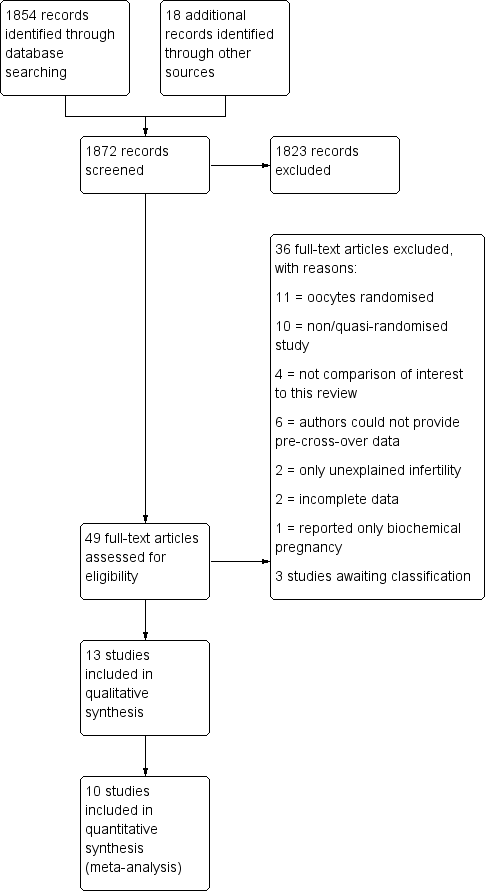Contenido relacionado
Revisiones y protocolos relacionados
Esmée M Bordewijk, Marleen Nahuis, Michael F Costello, Fulco Van der Veen, Leopoldo O Tso, Ben Willem J Mol, Madelon van Wely | 24 enero 2017
Reuben Olugbenga Ayeleke, Joyce Danielle Asseler, Ben J Cohlen, Susanne M Veltman‐Verhulst | 3 marzo 2020
Jan Bosteels, Steffi van Wessel, Steven Weyers, Frank J Broekmans, Thomas M D'Hooghe, M Y Bongers, Ben Willem J Mol | 5 diciembre 2018
Rui Wang, Nora A Danhof, Raissa I Tjon‐Kon‐Fat, Marinus JC Eijkemans, Patrick MM Bossuyt, Monique H Mochtar, Fulco van der Veen, Siladitya Bhattacharya, Ben Willem J Mol, Madelon van Wely | 5 septiembre 2019
Sesh Kamal Sunkara, Mohan S Kamath, Zabeena Pandian, Ahmed Gibreel, Siladitya Bhattacharya | 27 septiembre 2023
Cindy Farquhar, Luk Rombauts, Jan AM Kremer, Anne Lethaby, Reuben Olugbenga Ayeleke | 25 mayo 2017
Rose McDonnell, Jane Marjoribanks, Roger J Hart | 12 diciembre 2014
Bich Ngoc Bui, Sarah F Lensen, Ahmed Gibreel, Wellington P Martins, Helen Torrance, Frank J Broekmans | 24 octubre 2022
Lidija Rakic, Elena Kostova, Ben J Cohlen, Astrid EP Cantineau | 14 julio 2021
Abdelhamid M Attia, Ahmed M Abou‐Setta, Hesham G Al‐Inany | 23 agosto 2013
Respuestas clínicas Cochrane
Jane Burch, George Salamalekis | 7 noviembre 2016
Jane Burch, George Salamalekis | 7 noviembre 2016

























